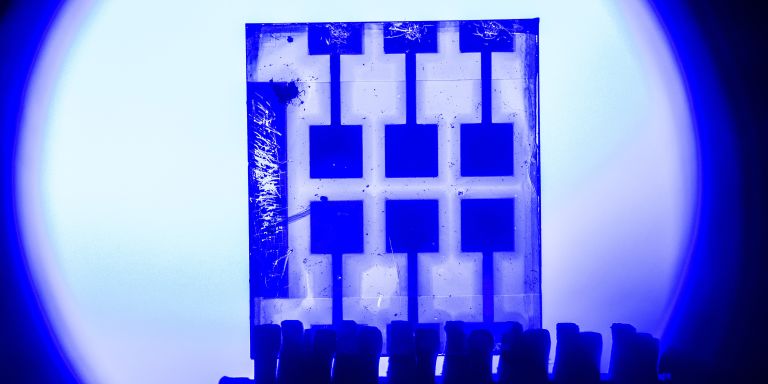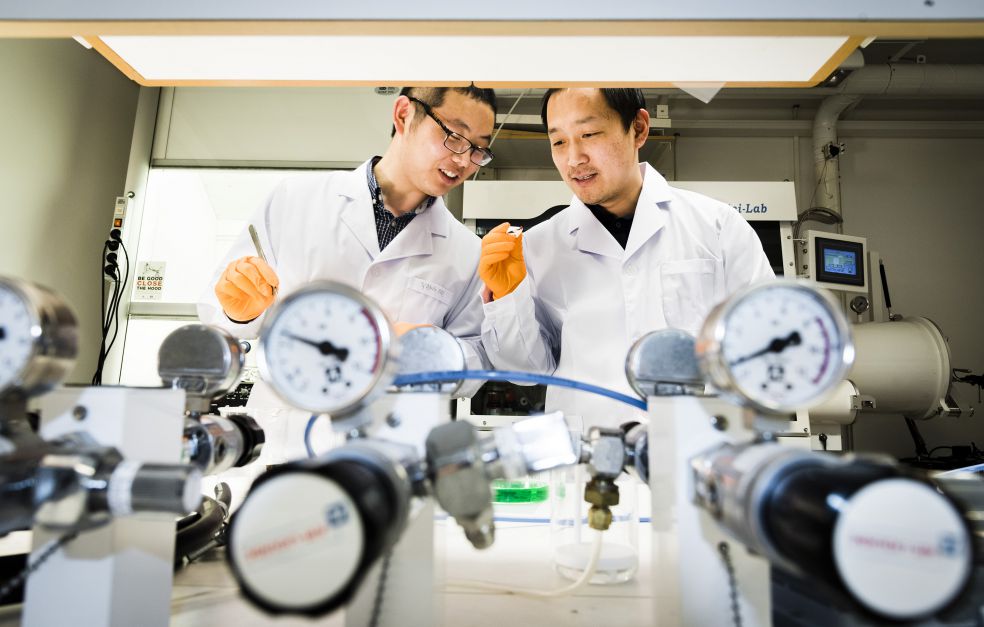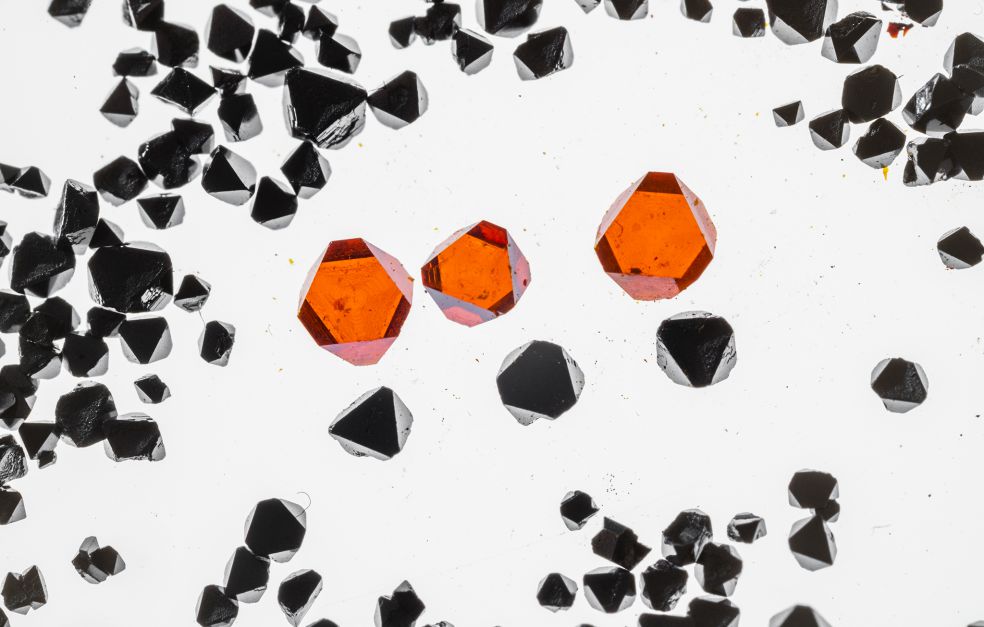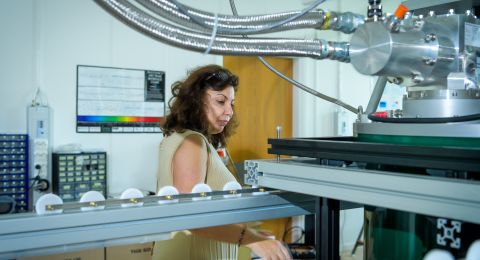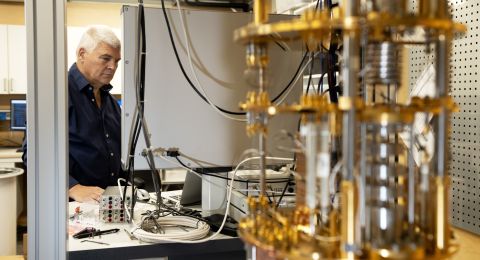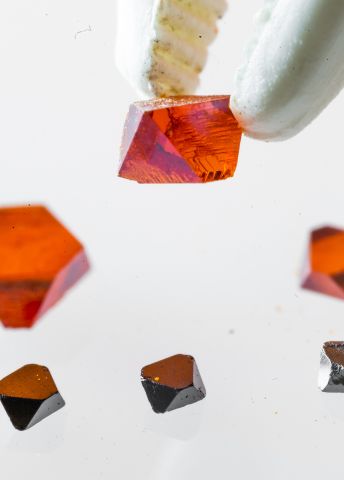
Project Grant 2019
Multidisciplinary design of lead-free double perovskite alloys for future optoelectronics and spintronics
Principal investigator:
Professor Feng Gao
Co-investigators:
Linköping University
Igor Abrikosov
Weimin Chen
Mats Fahlman
Institution:
Linköping University
Grant in SEK:
SEK 34 million over five years
Over the past few years the number of solar panels in Sweden has increased four times over. The market is currently dominated by silicon-based cells, but other kinds are waiting in the wings. They include dye-based solar cells, known as Grätzel cells, organic solar cells made of polymers, and solar cells based on a class of compounds known as halide perovskites. No technology will be attractive unless it is sufficiently energy-efficient, has a long life and is cheap to mass-produce.
“The price of silicon-based solar cells has fallen dramatically in recent years, and they can last up to twenty years. The technology we are developing is expected to be as efficient as silicon, and at the same time even cheaper,” says Feng Gao, who is leading the project, funded by Knut and Alice Wallenberg Foundation.
Simpler manufacture
Halide perovskite is a collective term for a number of materials possessing a crystalline structure that is unusually good at absorbing as well as emitting light. It can therefore be used both in solar cells and in LED lamps. Moreover, these optoelectronic devices containing perovskite can be manufactured using methods resembling normal printing technology, unlike silicon cells, which require a complicated multistage method. But so far the use of perovskite has been hampered by a number of problems. It has been difficult to make the material stable enough, and it contains lead – a heavy metal.
Gao has been researching stable alternatives to lead-based perovskites since 2017. In the material he is working on, lead is replaced by a double arrangement of metal ions, forming what are known as double perovskites. The next stage is to succeed in fabricating double perovskites with better optical properties.
Gao is therefore engaged in a multidisciplinary project with three other researchers at Linköping University. Their aim is to develop completely new forms of two double perovskite alloys.
“I got the idea as a Wallenberg Academy Fellow, inspired by the successful semiconductor developments that have revolutionized the electronics industry. There, alloys offered a means of tailoring the electronic properties of different substances,” Gao says.
Now, for example, alloys of double perovskites may make it possible to decide which wavelengths of sunlight are to be absorbed and emitted. The alloy enables scientists to control the optical band gap of the material.
The project has been in progress since 2020, and the researchers have identified a handful of materials with the promising properties. They believe that they will find far more using more refined methods.
“The options will increase dramatically as we develop new tools. We are using theoretical computations, which are followed up with experiments to improve our understanding, and arrive at methods that can be used more generally,” Gao explains.
The researchers are allowing theory and experiments to interact with each other. Computations and modeling are tested experimentally. The results are shared with theoreticians to find new ways of characterizing materials with the desired performance.
Capturing indoor light
Another advantage of perovskite-based solar cells is that they can capture and convert energy from indoor lighting. This ability may in itself play a key role in the development of new sensors for the burgeoning internet of things, where growing numbers of day-to-day objects and devices are connected up to the internet for control, monitoring and surveillance. If the sensors themselves can be powered by the indoor light, they are likely to be much more widely used than if they depend on regular battery changes.
“And different solar cell technologies can complement each other, depending on the desired application,” Gao says.
For example, it is possible to use certain materials to make solar cells that are virtually transparent. These can then be placed on windows or cover building facades. Combining multiple technologies increases potential applications of solar cells.
A substance for quantum computers
One of the experiments performed to date have included iron ions in the alloy, which impart magnetic properties to the perovskites. This may pave the way for use of spintronics, which is a technology expected to play a major part in the information technology of tomorrow.
Spintronics makes it possible to use electron spin as a carrier of information. This may lead to more energy-efficient information storage, as well as faster processing and transfer of data. Spintronics may eventually become a key technology in the development of quantum computers.
“We still need to find a way to retain spintronic properties at room temperature. But hopefully we will lay the foundation for a completely new research field based on double perovskite alloys.”
So far the experiments have required cooling to approximately -243.15°C, which is close to absolute zero.
“Research on perovskites is under way in many places around the world, but our approach is unique. That’s one reason I’m so grateful to Knut and Alice Wallenberg Foundation for making it possible to carry out such a high-risk project,” Gao says.
Text Magnus Trogen Pahlén
Translation Maxwell Arding
Photo Thor Balkhed
